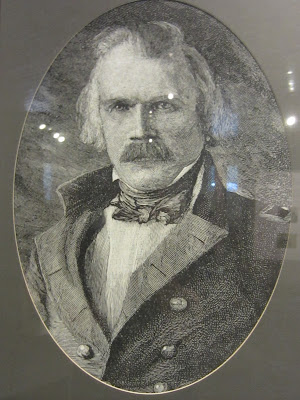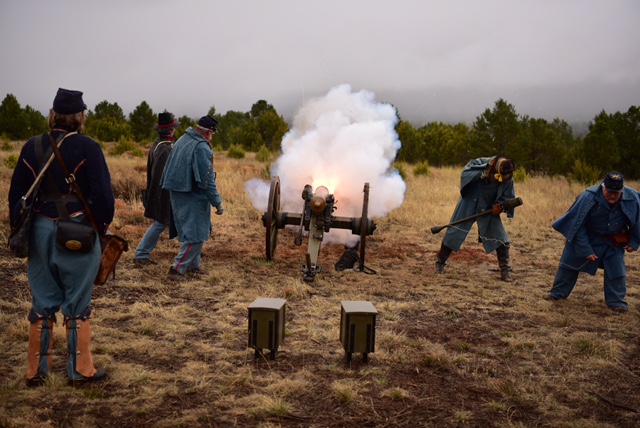Most of the blogs for Driven by History the last month or so
have focused on the Civil War. In addition to recounting the individual battles
like Manassas, Shiloh, and Antietam, I have written on other issues, such as
battlefield surgery and medicine, cannons, and riverboats. This posting will be
a bit different since I won’t take up a particular battle but will talk about
how fatalities affected those family members left behind. I don’t have
ancestors who fought in the Civil War, but I do have some who fought in World
War II. So, to look at the impact on family survivors, I will dive into my own
past and explore how a combat death had a generational ripple effect which
impacted people not yet born.
I have a black and white photograph taken in the jungles of
Philippines. My brothers and I uncovered it as we divvied up the boxes of
photos left over from Mom’s life. On the right in the photo is Capt. Daniel S.
LaShelle in slouch hat and crumpled fatigues. He stands tall and slender with
dark circles under his eyes. In his left hand burns a cigarette, and a wedding
band glows on his ring finger. The ring joins Dan and Anna Jane, my mother,
together. I never met Dan, my almost father.
Next to Dan stands a Filipino. He comes up to Dan’s shoulder
with his bushy hair. Perhaps Dan has just given him a cigarette. Two more are
tucked behind his right ear. He holds a machete at a downward angle in his
right hand and carries several bags over his shoulders. A scarf wraps around
his neck and bare torso, shorts hang loosely off his hips. Anklets ride above
his bare feet.
To Dan’s right stands another GI with hands on hips, smiling
at the camera. They are in the middle of a muddy clearing, surrounded by tall
palm trees. This is early 1945, on the island of Luzon, as the U. S. Army
wrestled back the Philippines from the Japanese. Dan served as a Captain in the
1st Infantry 6th Division.
I recorded an oral history of Mom about her World War II
experiences in May 1990. In the interview, she talked about dropping out of the
University of Kansas to work in an airplane factory in Kansas to support the
war effort. While in Kansas City, she met Dan in the summer of 1942. They married
in May 1943 and both went to San Luis Obispo for his military training. She rented a place at Morro Bay with
black-out curtains, and “Dan could come home most nights.” On some mornings,
they walked along the nearby beach looking for any footsteps from infiltrating
Japanese. In August or September of that year, she and the other wives drove up
to San Francisco and watched the troop ships steam under the Golden Gate Bridge
on their way to the war in the Pacific.
Neither Dan nor Mom knew where he was headed.
I asked “What was your feeling?”
She replied: “We didn’t have… so what do you think? We
thought of course that we’d see ‘em,”
She drove back to Kansas and worked at Boeing in Wichita in
the industrial engineering division in final assembly. She worked ten to twelve
hour shifts in the factory that ran twenty-four hours a day making B-29s, the new
Superfortresses that devastated America’s enemies in Europe and the Pacific.
She worked at Boeing from January 1944 to February 1945.
On January 9th, 1945, the 6th Army landed at the Lingayen
Gulf to fight their way south to Manila. In early February, Mom drove up to
Junction City, Kansas to visit Dan’s parents. On her way back to Wichita, she
stopped to see some friends in Salina. Her father tracked her down at her
friends’ house and called her to say that the Western Union had a telegram for
her and would only deliver it to her. He met Mom and Uncle Elmer Reed halfway
between the two cities, about forty-five miles north of Wichita. They went
straight to the Western Union office. The first telegram said that Dan was
wounded. A second one several days later confirmed that he had died. She recalled:
“He was wounded on [January] 24th and died on the 28th.”
My childhood memory comes into play. I remember Mom telling
this story: one of Dan’s men in his unit, possibly the Filipino scout in the
photo, was hit by a Japanese sniper. Dan crawled out to rescue him and was shot.
He was officially listed as DOW—died of wounds. As the second telegram
confirmed, he died several days after getting shot.
In the interview, Mom remembered that by the time she
received the second telegram, she had gotten calls from several of the wives
that she knew from San Luis Obispo. They had gotten letters from their husbands
that said that Dan was killed. So Mom knew before she was officially notified
by the War Department. Dan had been in the Philippines for two weeks.
I found a letter in Mom’s files from the Army to Mrs. Anna J.
La Shelle, dated March 8, 1945. I found it as I prepped for my Introduction to
U.S. History survey course. I had slipped the letter in my World War II file.
In the letter, Major General C. H. Danielson wrote to Mom: “The War Department
has informed me that your husband, Captain Daniel S. La Shelle, has given his
life in the performance of his duty. It is therefore with deep sympathy that I
address you in behalf of this Command and extend every possible comfort and
assistance.” Gen. Danielson suggested that Mom contact a “Personal Affairs
Officer in the vicinity” in Wichita, avail herself of any assistance such an
officer has available, or contact the nearby Red Cross office “to provide
counsel and assistance.” He concluded: “I hope that the passing days will bring
you comfort and a consoling pride that your husband gave up his life to set men
free. His name will be honored one among all who were privileged to know him.” I
show this letter to my history classes as an example of the sacrifice and
tragedy of the war.
In my oral history with her, Mom talked about how devastated
she was, how she spent weeks crying in her room, and then how her father put
her in his car and drove her back to the Chi Omega House in Lawrence. In the
embrace of her sorority sisters, she began to return to the living although she
never fully recovered.
After the interview, I went off to the store to get some
things for dinner. Mom turned the tape recorder back on and added something to
the interview. Later that evening, I listened to her addendum. She said: “That
was so painful, losing Dan. I didn’t want to hurt that bad ever again, so I
resolved never to love anyone again.” Many people loved Anna Jane throughout
her life. She loved many people in return, but perhaps not very closely. For
me, Mom had a hard time loving those close to her, a consequence of Dan’s death
in World War II.
Mom had lost her first husband. Dan La Shelle was one of the
nearly 14,000 U.S. casualties in retaking the Philippines. My Dad, Paul Hunner,
also fought in the invasion in 1944-45, and lived. I am here to tell the tale of my family because he survived, and Dan did not. So I bear witness to the effects of war
deaths and combat injuries that last far beyond the immediate moment. They outlive even
the survivors. World War II, the Civil War—these and all wars impact those combatants who survive, those who fight on the home front, and the children of the combatants. The story of Anna and Dan is repeated throughout the ages. It is also
the story of war.













































